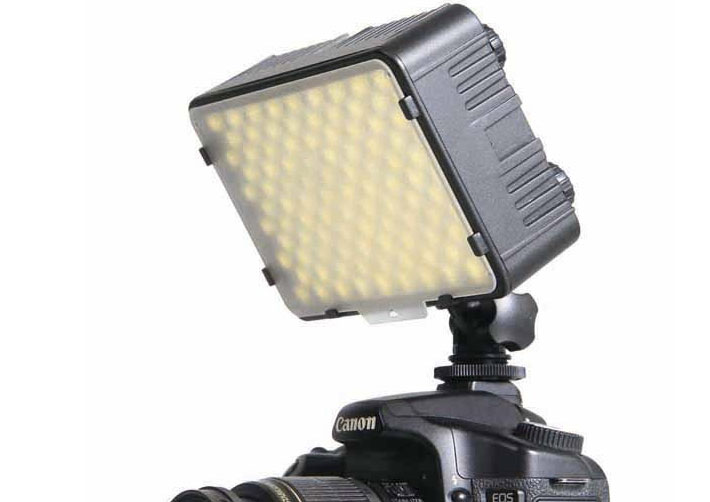
The first LED panels from Phottix, launched in 2014, offered a simple solution for small crews of videographers or for photographers working on their own and wanting to travel light. With three models available, VLED 168, VLED 198 and VLED 260 – the number representing the number of LEDs in each VLED, it became easy for me to choose which to use: the most powerful of them.
The VLED 260 is not different from the other models, but offers 1600 Lumens, which I felt would be useful for my work, both in photography and video. I’ve used the panels intensively in photography, as a way to have continuous light in a portable and controllable package. The fact that it offers, as the other models, stepless brightness adjustment, the option to use external battery adapters such as Canon LP-E6, Nikon EN-EL15, Panasonic CGR-D16S, Sony NP-FH70, NP-FM55H, NP-F550, besides orange and white diffusion panels, makes this a versatile LED panel for different users and uses.
I do not use external batteries with adapters on my VLEDs, but the fact that I can use the same AA batteries (six in this case) I use for my flashes does help to carry less weight around. I’ve used the LED panels connected to the mains, in some situations, through a mains adapter, which is a good solution if you’re working indoors and don’t mind having some extra wires and cables around.
Mostly, though, I use them with AA batteries, also because then they are easy to move around. They are sold with a hot shoe adapter that allows to adjust the angle of the LED panel, and they are built in such a way that you can, through an adapter present in the box, combine multiple panels vertically or horizontally to create larger LED banks. I’ve used that feature in some occasions, to get some extra light on one spot, and it’s a welcome trick to get multiple lights on a single support.
The original VLED 260A offers 5500K in terms of temperature, meaning you’ve to find ways to adjust your lighting when using it under different situations. But now Phottix has another solution, which follows in the same direction as LED panels from other brands: the VLED 260C offers the option to control the color temperature from 3200K to 7500K, by adjusting two dials. It’s a good solution, extending the control you have in different lighting situations. The feature is present on the VLED 260C but also on a new model, the VLED 198C. Both offer the same stepless brightness adjustment, battery adapters, and orange and white diffusion panels, and the option to combine them to create larger banks, as the previous models.
The statue and fruits stills published here are captures from the video segments created to test the panel. Although I appreciate the presence of two dials to control the amount of light at 3200K and 7500K, I wish there was an on/off button that would allow users to keep the dials at a chosen position, so one could get back to the exact same mix from one session to the next. This means, also, having some form of marks on the dials so users are aware of the ratio used.
I like to use LED panels in multiple situations, and I’ve used them intensively both for my work and photography workshops. Two good examples of such use are photography of museum artefacts and backstage photos at theater plays. I’ve regularly explored the use of continuous light in these situations, using different LED panels. The two photos published with this text are examples of that kind of work, and a good way to show that small, cheap LED panels, can be used for serious work. I am curious to see what can be done with the new VLED 260C from Phottix. The first tests suggest it works as expected. The recommended price for the VLED 260C is $98.
